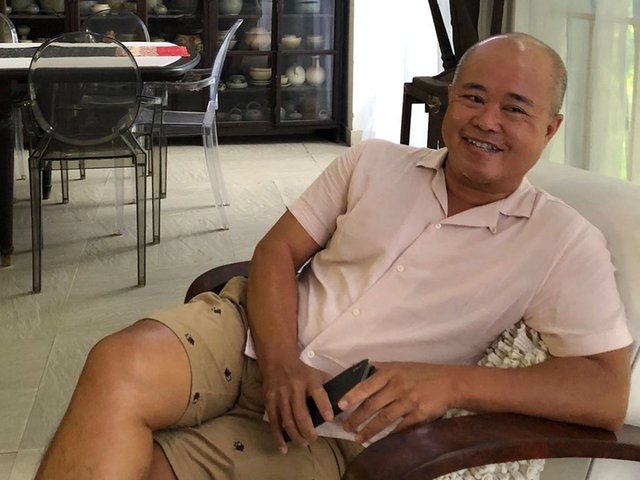1954 The National Fine Arts College of Saigon established, followed by the Fine Arts College of Vietnam in Hanoi in 1955. Both focus on painting.
1975-80s In 1976 Vietnam is unified under Communist leadership. In 1978, the Khmer Rouge takes control of Cambodia, renaming the country Kampuchea. During forced de-urbanisation and purging of cultural life many artists are killed. The development of an art scene in this region is deeply affected by the instability of war and lack of new influences under the Communist period.
Mid-1980s The Vietnamese government initiates doi moi (renovation), a series of social reforms that allow artists new creative freedoms. Galleries start to open. The Hanoi group “Gang of Five” is formed: young artists with an expressionist/abstractionist orientation. Including Dang Xuan Hoa, Ha Tri Hieu, Pham Quang Vinh and Le Thiet Cuong, they are the first artists to gain international recognition after doi moi.
1990 Salon Natasha is the first private gallery to open in Hanoi, managed with the experimental edge of an alternative space. Directors Veronica Radulovic and Natalia Kraevskaia are part of a new generation of viet kieu, foreign artists returning to Vietnam, and significantly shaped an emerging contemporary art scene. They show Tran Trong Vu, Nguyen Minh Thanh, Nguyen Quang Huy, Dinh Thi Tham Poong and Nguyen Van Cuong.
1991 L’Espace Alliance Française opens in Hanoi, followed by the British Council (1993), the Goethe-Institut (1997) and Nha San Duc (1998), run by artists Tran Luong and Nguyen Manh Hung.
1993 Vietnamese artists start to get exposure internationally, with Nguyen Xuan Tiep in the First Asia Pacific Triennial (APT) in Brisbane (1993) and three artists in the APT of 1999. The first Fukuoka Art Triennial includes artists from Cambodia, Laos, Myanmar and Vietnam. With additions in the 2002 and 2005 exhibitions, it has consistently made the art of this region known.
1993 Laos-born artist Vong Phaophanit shortlisted for the UK’s Turner Prize.
1994 The US lifts the economic embargo against Vietnam.
1996 Blue Space Contemporary Arts Centre opens in Ho Chi Minh City (HCMC).
1996 Vietnam becomes a member of the Association of Southeast Asian Nations (Asean), followed by Myanmar (1997), Laos (1997) and Cambodia (1999).
1998 The non-governmental organisation Reyum is founded in Phnom Penh by Ly Daravuth and Ingrid Muan to stimulate contemporary Cambodian arts and encourage research.
2002 “AseanARToday: Thailand & Cambodia, Laos, Myanmar” is the culminating exhibition in a number of national shows surveying contemporary art. Presented at the National Art Gallery, Kuala Lumpur, it includes ten Thai artists, two Cambodian, three Laotian and two artists from Myanmar.
2003 The Asean Art Awards, sponsored by Philip Morris, prohibit Myanmar from participating. No explanation is given. It is widely assumed by Myanmar artists that the decision supported US sanctions imposed in 2003.
2003 Dinh Q. Lê is included in the section of the 50th Venice Biennale selected by Chinese curator, Hou Hanru. The following year the artist holds two important exhibitions in the US: “From Vietnam to Hollywood” at PPOW Gallery in New York (2004) and “Vietnam: Destination for the New Millennium” (2004) at the Asia Society New York. He has played a vital role in the local contemporary art scene since returning to HCMC in 1994. In 2006 he is commissioned to make new work for the fifth APT. Around the same time, Jun Nguyen-Hatsushiba gained international recognition for his underwater film, “Memorial Project Vietnam” (2003).
2004 Hanoi’s Ryllega, the first non-profit gallery with the express purpose of supporting experimental contemporary art, opens; also “a little blah blah (a.l.b.b.)” launches, a foreign artist initiative, followed by the French-run “Atelier Wonderful District” in 2005. All these venues play a vital role in shifting perceptions and developing contemporary art practice.
2004 Richard Streitmatter-Tran, founder of the artist/designer group based in HCMC, “project one”, is presented at the Gwangju Biennale. Recently, he has been awarded an Asian Art Archive scholarship to document contemporary art practice along the Mekong River.
2005 The first Visual Arts Open, VAO Cambodia, is held in Phnom Penh.
2006-08 “Saigon Open City”, a two-year project aimed at developing audiences and the sustainability of contemporary art in Vietnam, through exchanges, forums and three thematic exhibitions: liberation, unification and (re)construction.
2006-08 “The Mekong Art and Culture Project” is a two-year art collaboration spanning four countries and eight art institutes across the Mekong region, including Thailand, Vietnam, Laos and Cambodia. The aim is to expand contemporary art practice through community-based workshops and exhibitions. Supported by the Rockefeller Foundation.
2007 Meta House, Cambodia’s first art and communication centre, is behind a three-year project entitled “Intercity: Urban Arts for Southeast Asia”. Research and networking (com.piling/2007) commenced 2007, (com.muting/2008) linking artists in Bangkok, Hanoi, HCMC, KL, Jakarta and Manila through workshops and residencies in 2008 and (com.prehending/2009) an exhibition presented in Berlin.
Originally appeared in The Art Newspaper as 'Cambodia, Vietnam, Myanmar and Laos Milestones'


